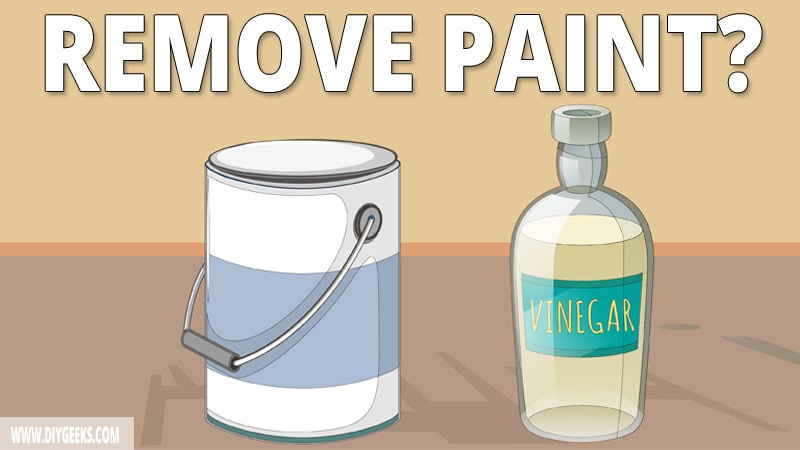Vinegar is an acid solution used for different things, including painting projects. So, can you remove paint with vinegar?
You can remove water-based paint with vinegar, but can’t remove oil-based paint. Vinegar will soften dried oil-based paint, making scraping it easier.
Vinegar takes around 20 minutes to remove or soften a paint finish. If it can’t completely remove the finish, you can scrape the remaining off.
Can You Remove Dried Paint With Vinegar?
You can remove dried water-based paint with vinegar, but can only soften oil-based paints. Oil-based paint finishes are harder to remove because their glossy topcoat prevents solvents from penetrating and dissolving the coating.
Vinegar is an acetic acid produced from the oxidation of ethanol by acetic bacteria. Ethan is a key ingredient for alcohol-based paint removers and helps vinegar to soften paint coatings.
You can soften a dry oil-based paint with vinegar, then use a paint scraper to scrape the paint off.
How Long Does Vinegar Take to Remove Paint?
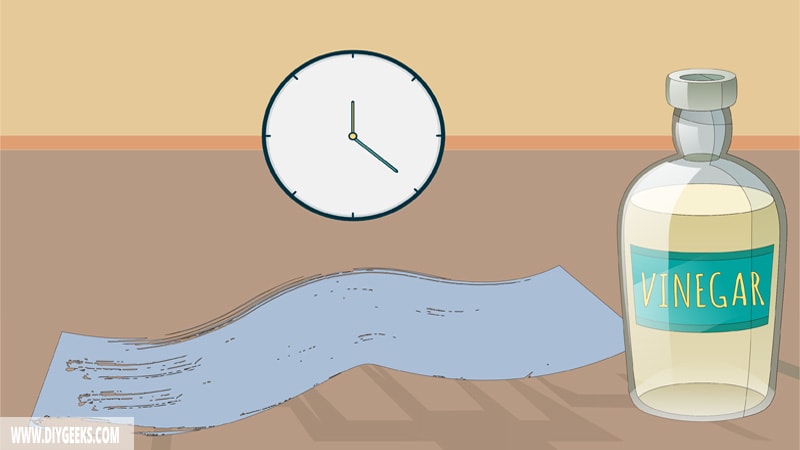
Vinegar takes around 20 minutes to remove or soften paint on a surface. Vinegar penetrates the paint coating, dissolves the paint particles and binders, and liquefies or dissolves the paint coating.
The exact time depends on the finish type (water or oil-based), the surface type, how dry the paint is, and the vinegar concentration. For instance, vinegar removes water-based paints faster as it’s easier to penetrate and dissolve them.
The more paint coats on the surface, the longer vinegar will take to penetrate and dissolve the paint.
How To Remove Paint Using Vinegar?
To remove paint using vinegar, do the following things.
- Dilute Vinegar.
- Apply the Vinegar.
- Scrape the Paint.
- Clean the Surface.
The tools you need for this project are listed below.
- Bottle of distilled vinegar
- Pair of gloves
- Scraper or putty knife
- Bucket of warm water
- Clean rags
- A clock or timer
1. Dilute Vinegar
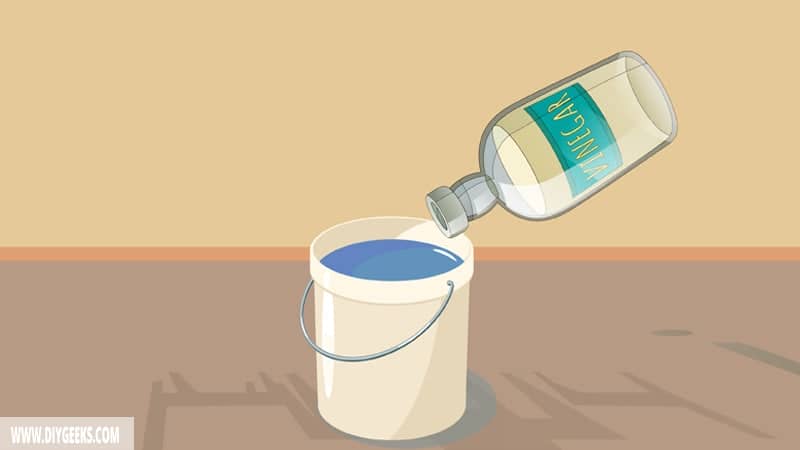
Dilute vinegar with water to decrease its concentration. Large amounts of vinegar will damage or discolor the underlying surface.
To dilute vinegar before removing oil-based paint, use a ratio of 1:1 (1 part water to 1 part vinegar). To thin vinegar before removing water-based paint, use a ratio of 2:1 (2 parts vinegar to 1 part water).
Oil-based paint finishes are harder to remove, so the vinegar concentration must be higher.
Note: Contrary to people’s beliefs, don’t boil vinegar before mixing it with water to increase its potency. The acetic acid in the vinegar will evaporate if heated.
2. Apply Vinegar.
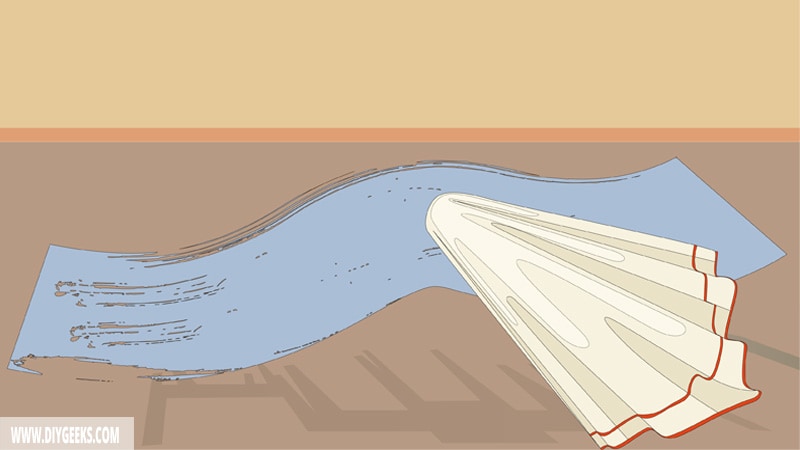
For non-porous surfaces, pour diluted vinegar directly over the paint finish. For porous and sensitive surfaces, damp a rag with vinegar and use the dampened rag to wipe the paint finish.
3. Scrape the Paint
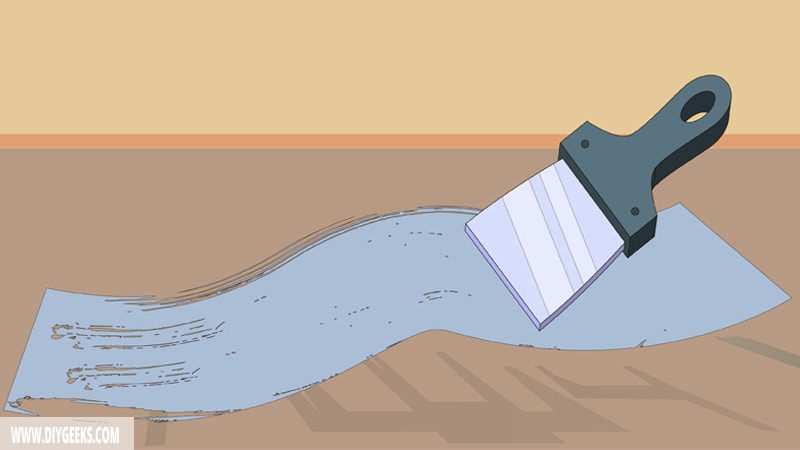
Scrape the paint finish 15 minutes after applying vinegar over it. Place the paint scraper under the paint coat and lift it repeatedly until the paint is completely off.
Within 15 minutes the vinegar will penetrate the paint coating, dissolve the paint binder and particles, and dissolve or soften the paint coating.
4. Clean the Surface
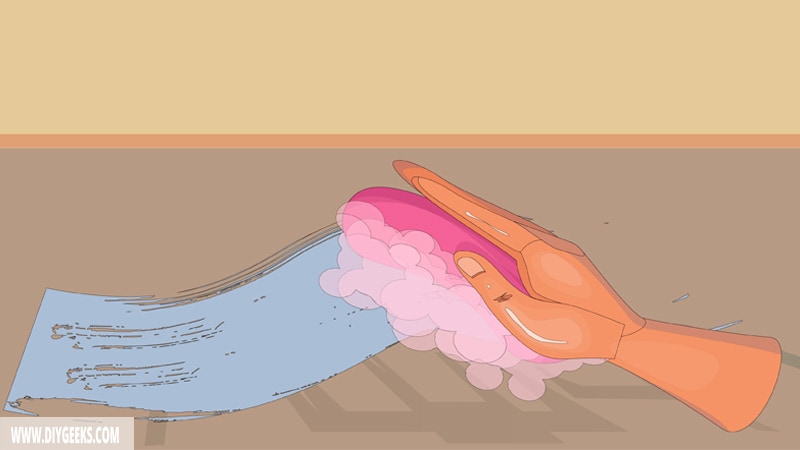
Clean the surface to remove vinegar residue as it can discolor or damage sensitive surfaces.
To remove vinegar residue, pour warm soapy water and use a scrubbing brush to scrub the surface. Pour clean water and leave the surface to completely dry.
Can You Remove Paint With Vinegar From Different Surfaces?
You can remove paint with vinegar from the following surfaces.
Concrete
You can remove paint from concrete with vinegar. Vinegar is safe to use on concrete as it doesn’t etch, corrode, or discolor it.
To do so:
- Dilute vinegar with water (1:1 ratio).
- Apply it to the concrete.
- Wait 15 minutes.
- Use a clean rag to wipe the coating off.
Don’t use a paint scraper to remove paint from concrete as you can scratch it.
Wood
You can remove paint from wood with diluted vinegar. Wood is a porous material and will absorb a heavy amount of vinegar, so diluting it is necessary.
To use it:
- Mix the vinegar with water in a ratio of 1:3 (1 part vinegar 3 parts water).
- Dip a rag in the mixture and use the rag to clean the wooden surface.
- Leave the mixture on the wooden surface for 10-15 minutes and then use a paint scraper to remove the paint.
Metal
You can remove paint from metal with vinegar, but it’s not recommended to. Vinegar is an acid and can corrode, discolor, or etch the metal surface.
Plastic
To remove paint from a plastic surface with vinegar, do the following things.
- Pour vinegar into a soft sponge.
- Use the sponge to wipe the plastic surface.
- Wait 10 minutes.
- Wash the plastic surface with soapy water.
What Types of Paint Can You Remove With Vinegar?
- Emulsion Paint. You can remove emulsion paint with vinegar within 10 minutes. Emulsion paint is water-based and is easy to remove.
- Enamel Paint. You can’t remove enamel paint with vinegar, but you can soften its finish. Enamel paint is oil-based, prevents proper penetration, and is harder to dissolve.
- High Gloss Paint. You can remove high-gloss paint with vinegar, but it’s not recommended to. High-gloss paint is harder to remove and there are better alternatives to remove it.
- Wood Stain. You can remove wood stain finish with vinegar. Wood stain doesn’t produce a protective topcoat and doesn’t have protective additives that make it immune to penetration.
